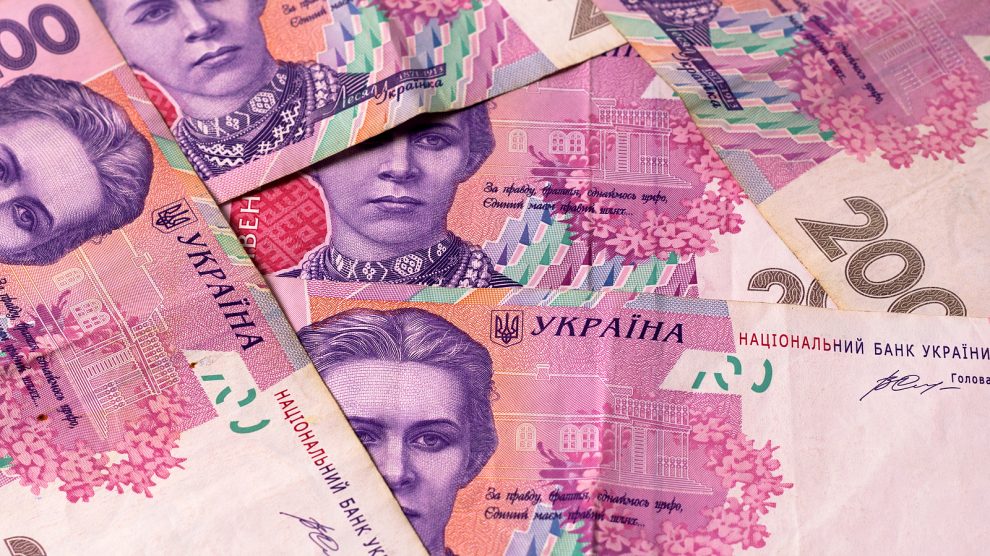Hard-earned experience fighting banking crises over the past three decades has served Ukraine’s banking sector well, but clouds loom on the horizon.
It was a big surprise for all of us to see the Ukrainian banking sector successfully weathering the first dramatic hit of this war.
Extensive experience fighting consecutive banking crises over the past three decades, coupled with the hard work of the central bank on strengthening and cleaning the banking system over the last eight years have been the reasons why the banking system has turned out to be an island of stability in the havoc of the first weeks of Russia’s invasion.
- 100 days on from Russia’s invasion, Ukraine’s allies are doing too little to facilitate victory
- Ukraine takes centre stage at Davos, sets out vision of digital future
- EU, UK remove tariffs on Ukrainian goods, but logistical problems continue to hamper trade
On the first day of Russia’s aggression the central bank introduced well-designed targeted restrictions which allowed Ukrainians and legal entities to maintain their operations but prevented panic attacks.
The exchange rate of the hryvnia was fixed, restrictions on capital flow were introduced, and restrictions on cash withdrawals were introduced.
At the same time the central bank allocated sufficient efforts to maintain cashless operations amid a spike in demand for cash. As a consequence, Ukrainians were able to make all necessary transactions (locally and abroad) with locally-issued credit cards. People were able to withdraw cash in hryvnia (up to the equivalent of 3400 US dollars per day) which was more than enough for daily needs.
The purchase of foreign currency was forbidden for individuals but transactions with hryvnia cards abroad were fully operational. Firms could purchase foreign currency only for critical imports.
Over the first week of the war businesses explicitly preferred to receive payments in cash and avoided cashless operations since banking transactions could take up to three days. It was mainly the big retailers that continued accepting credit cards while micro- and small businesses switched to “cash-only”.
However, as nothing dramatic happened and banks tuned their servers (many banks moved them abroad), businesses were already returning to cashless operations just a few weeks after the start of the Russian invasion.
A system in good shape
The banking system entered the crisis in very good shape.
In 2021, the banking sector reported historically record high profits at the level of 2.85 billion US dollars. The level of non-performing loans (NPLs) had been decreasing persistently since the crisis of 2014-16 and had reached 30 per cent by the end of 2021 (down by 11 percentage points through the year). The banks had been subjected to regular stress-test exercises, upgrading their stability.
There was a short drop in liquidity through the first two days of the war, and banks rushed to withdraw deposit certificates to cover the gap. However, the national bank reacted promptly with abundant refinancing (26.7 billion hryvnia on February 24 and 51.5 billion hryvnia on February 25) and the situation with liquidity stabilised.
It soon became clear that the system was stable and working relatively well, and excessive liquidity had started returning to deposit certificates by March. Since then, the level of liquidity of the banking system has been growing. By May 23 outstanding deposit certificates reached 188.4 billion hryvnia compared to 58.0 billion hryvnia on February 28.
After proving resilience of the banking system at the start of the war, we have seen confidence in Ukraine’s banks maintained, among both businesses and households. In particular, in March the level of household deposits in the national currency increased by 15 per cent. Deposits in foreign currency dropped but only by one per cent. Enterprises decreased both hryvnia (-0.1 per cent month-on-mont) and foreign currency deposits (-7.7 per cent) but mainly under the pressure of financing operational needs. Nevertheless, the situation with deposits will turn negative at some stage amid widespread loss of incomes.
Crediting naturally stalled. The authorities are pushing state banks (which account for nearly 47 per cent of banking sector) to provide subsidised loans to farmers and micro-businesses and some progress was reported, although entrepreneurs are reporting a lack of turnover funds.
Commercial banks simply do not want to take extra risks and even state banks have started grumbling that compensation for subsidised loans already issued has been delayed.
The outlook is gloomy
Though the banking system withstood the first punch of the war, the prospects for Ukrainian banks are gloomy.
The level of NPLs will grow given the severely damaged economy and banks will have to record reserves on those NPLs, suffering substantial losses. In April the banking system already reported nearly 248 million US dollars in losses for just one month, and the figure will only grow with time.
From the start of the war only two banks with Russian ownership have been removed from the market, while the national bank has removed the Russian shareholders of Alfa-Bank from decision-making and its nationalisation is being discussed.
Four Ukrainian banks are reported to be at risk; however, we should not expect any decisions on them until the end of the war. Most likely, the Ukrainian monetary authorities will support those banks with some liquidity to avoid extra tension in society related to the potential closure of problematic banks.
Luckily, they are few in number. So far.
Unlike many news and information platforms, Emerging Europe is free to read, and always will be. There is no paywall here. We are independent, not affiliated with nor representing any political party or business organisation. We want the very best for emerging Europe, nothing more, nothing less. Your support will help us continue to spread the word about this amazing region.
You can contribute here. Thank you.




Add Comment